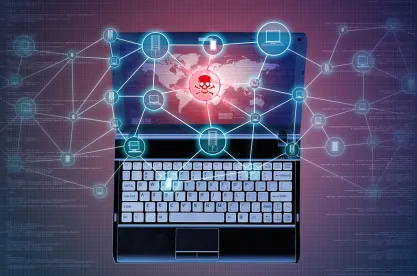Malware Activity
Uber Discloses New Data Breach Related to Third-Party Vendor
Uber has disclosed a new data breach that is related to the security breach of Teqtivity, a third-party vendor that Uber uses for asset management and tracking services. A threat actor named “UberLeaks” began leaking allegedly stolen data from Uber and Uber Eats on December 10, 2022, on a hacking forum. The exposed data includes Windows domain login names and email addresses, corporate reports, IT asset management information, data destruction reports, multiple archives of apparent source code associated with mobile device management (MDM) platforms, and more. One document in particular contained over 77,000 Uber employee email addresses and Windows Active Directory information. UberLeaks posted the alleged stolen information in four (4) separate postings regarding Uber MDM, Uber Eats MDM, Teqtivity MDM, and TripActions MDM platforms. The actor included one (1) member of the Lapsus$ threat group in each post, but Uber confirmed that Lapsus$ is not related to this December breach despite being previously linked to the company’s cyberattack in September 2022. Uber confirmed that this breach is not related to the security incident that took place in September and that the code identified is not owned by Uber. Teqtivity published a data breach notification on December 12, 2022, that stated the company is aware of “customer data that was compromised due to unauthorized access to our systems by a malicious third party” and that the third-party obtained access to its AWS backup server that housed company code and data files. Teqtivity also noted that its ongoing investigation identified the following exposed information: first name, last name, work email address, work location details, device serial number, device make, device model, and technical specs. The company confirmed that home address, banking information, and government identification numbers are not collected or retained. Uber and Teqtivity are both in the midst of ongoing investigations into this data breach. CTIX analysts will provide updates on the matter once available.
Threat Actor Activity
PLAY Ransomware Claims Responsibility for Antwerp Cyberattack
After last week's ransomware attack on the city of Antwerp, a threat organization has claimed responsibility and has begun making demands. The threat group, tracked as PLAY ransomware, is an up-and-coming ransomware operation that has been posting leaked information since November 2022, according to an available posting on their leak site. Samples of the threat group’s ransomware variants have shown activity dating back to June 2022, which is around the time PLAY ransomware targeted the Argentina Court of Cordoba (August). While PLAY’s ransomware attack crippled several sectors of Antwerp, it appears to have had a significant impact on residential facilities throughout the city, as stated by officials. According to PLAY NEWS, PLAY’s ransomware leak site, the publication date for the exfiltrated data is Monday, December 19, 2022, if the undisclosed ransom is not paid. PLAY threat actors claim to have 557 gigabytes (GB) worth of Antwerp-related data including but not limited to personal identifiable information, passports, identification cards, and financial documents. CTIX continues to monitor the developing situation and will provide additional updates as more information is released.
Vulnerabilities
Fortinet Patches Critical RCE Vulnerability in FortiOS SSL-VPN Products
After observing active exploitation attempts in-the-wild, the network security solutions manufacturer Fortinet has patched a critical vulnerability affecting their FortiOS SSL-VPN products. The flaw, tracked as CVE-2022-42475, was given a CVSS score of 9.3/10 and is a heap-based buffer overflow, which could allow unauthenticated attackers to perform arbitrary remote code execution (RCE) if successfully exploited. Specifically, the vulnerability exists within the FortiOS sslvpnd product, which enables individual users to safely access an organization's network, client-server applications, and internal network utilities and directories without the need for specialized software. The vulnerability was first discovered by researchers from the French cybersecurity firm Olympe Cyberdefense who warned users to monitor their logs for suspicious activity until a patch was released. Although very few technical details about the exploitation have been divulged, Fortinet did share lists of suspicious artifacts and IPs. Based on research by Ankura CTIX analysts, the IPs released by Fortinet are located around the globe and are not associated with known threat actors at this time. To prevent exploitation, all Fortinet administrators leveraging FortiOS sslvpnd should ensure that they download and install the latest patch. If organizations cannot immediately patch their systems due to the business interruption it would cause, Olympe Cyberdefense suggests "customers monitor logs, disable the VPN-SSL functionality, and create access rules to limit connections from specific IP addresses." A list of the affected products and their solutions, as well as the indicators of compromise can be found in the Fortinet advisory linked below.
The semi-weekly Ankura Cyber Threat Investigations and Expert Services (CTIX) FLASH Update is designed to provide timely and relevant cyber intelligence pertaining to current or emerging cyber events. The preceding is a collection of cyber threat intelligence leads assembled over the past few days and typically includes high level intelligence pertaining to recent threat group/actor activity and newly identified vulnerabilities impacting a wide range of industries and victims.



 />i
/>i
